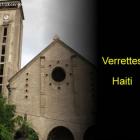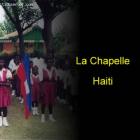ADVERTISEMENT
City - Haiti Observer Blog
City, Haiti Observer Blog. Read the following articles about City
Things To Know About the town of Anse Rouge
One of the towns comprising Haiti's Gross-Morne Arrondissement is Anse Rouge. Some 32,100 people live in Anse Rouge, making it a little bit overcrowded. Though a lot of people live here, the town is still described as a paradise. It is a beautiful place where people can revel in the beauty of the blue and cloudy sky, as well as the sea in the distance. However, the climate changed over the years. The town used to get a high amount of rainfall but now, it rarely rains in the area. As a matter if fact, the ground has become too hard and dry because of the lack of rain. It now looks like a desert, leading to lower agriculture production.
The Good Things About the town of Estere
Though it is a small rural town in Haiti's Artbonite Arrondissement, Estere has a lot of good things going on. Previously known as Pont de l'Estere, the town is situated 96 kilometers from the country's capital of Port-au-Prince.
Estere is described as a relatively flat town where cactus and small lizards are very common. However, it is also known for its breathtaking views. With the help of its tropical climate and warm weather, people can enjoy a panoramic view of the blue sky and white, fluffy clouds. Nearby hills also add a stunning beauty to the town.
Information On Grande Saline, Haiti
Grande Saline is among the four communes that comprise Haiti's Artibonite Arrondissement. The other three are Dessalines, Petite Riviere de I'Artibonite and Desdunes. With a population of 2,000 people, Grande Saline is situated in the northwestern part of the country, 24 kilometers away from the national capital of Port-au-Prince and 18 kilometers from Saint Marc. It is located near the Caribbean Sea, which connects the water from Artibonite River to the Gulf of Gonave.
Grande Saline has been hit by several health crises before. Two years ago, a Cholera outbreak claimed many lives and due to the lack of facilities, the bodies had to be buried in mass graves. It had to be done in order to prevent the disease from spreading and killing more people. Health crisis was not the only challenge that the town faced. Back in 2007, Grande Saline was also devastated by floods when the Artibonite River overflowed due to a tropical storm named Noel. Dozens of homes were destroyed, affecting people's lives and source of income. Oxfam, fortunately, lent a helping hand to the town by launching an emergency response program. The project helped residents and the entire town to deal with the disaster's aftermath.
Discovering town of Terre-Neuve
Around 28,000 aborigines live in a municipality called Terre-Nueve in the Artibonite Department of Haiti. This town is part of the country's Gros-Morne Arrondissement and is the third order administrative division. Every square kilometer of the town is home to about 160 people. Doland, Lagoon and Bois Neuf are the three communes that form Terre-Neuve, which is one of the hilly and mountainous regions in the country. It also has dense forests while being close to the Caribbean Sea.
With the rich forests found in the town, Terre-Nueve residents are more into farming and agriculture. The main produce in the area are cotton, vegetables and tobacco. Aside from agriculture, the town is also involved in the mining industry, where workers mine copper, zinc and lead. However, the town makes sure that mining would not destroy the environment. As a matter of fact, "green" initiatives are being taken to protect and conserve the environment.
Anse-a-Veau in Nippes Department
Within the Department of Nippes, sits the Anse-à-Veau Arrondissement. Five hamlet-like villages comprise Anse-à-Veau: Arnaud, L'Asile, Petit-Trou-des-Nippes, and Plaisance-du-Sud.
Anse-à-Veau has a population estimated to be between 31,000-55,000. Founded in 1721 as a cityship, it lies below left of Ile Gonave and an inlet of the Caribbean Sea. Three sub-divisions make up Anse-à-Veau: Grande-Rivière-Joly, Sault-des-Baril-Moinsard, and Baconnois-Grand-Fond.
Following Haiti's magnitude 7.0 2010 earthquake, which reduced most of Haiti to rubble, thousands upon thousands of Port-au-Prince survivors overflowed Anse-à-Veau, severely straining its people and services.
Anse-à-Veau's main income-producing activities are agriculture and fishing. Farmlands produce coffee, sugarcane, lemons, and oranges, and use sustainability practices. Cotton-growing also takes place. The small-craft fishing industry plies its trade along Anse-à-Veau's coastline.
Town of Beaumont in Haiti to produce yams, bananas and cassava
The town of Beaumont is located in Corail Arrondissement in Haiti's Grand'Anse department, deep in Haiti's Southern mountains. Haiti's President Michel Martelly went on a visit to Beaumont to look at how people live and how their living conditions can be improved. President Martelly plans to put more industries and population in the rural area so as to develop it. He believes that agriculture will improve Haiti. He thus thought of introducing production of yams, bananas and cassavas.
Production of yams, bananas and cassavas will greatly develop Beaumont in terms of creating jobs opportunities and also will improve Beaumont's economy. If the people of Beaumont agree to move from the urban areas and settle in the rural area where they will engage in farming, Beaumont will greatly develop and their living conditions will improve. Poverty is one of the greatest challenges facing Haiti and since there is enough land but people lack ideas on how to use it, President Michel thought of giving them the idea. The president was ready to support that farming if the people of Haiti were willing to develop.
Saut-d'Eau, The Pilgrimage Site
If there is one thing that the Haitian town of Saut-d'Eau in the Centre Department is known for, it is its holiness. Every year, thousands of Haitians go on a pilgrimage in the town to pray and ask for miracles to its patron saint, Lady of Mount Carmel. Saut-d'Eau, whose name means a "happy village," boasts of a couple of historical and mystical heritage sites.
One of them is the town's breathtaking waterfall, where the name Saut-d'Eau was actually derived from. The waterfall becomes a hot spot during the annual pilgrimage, as people go to the site and jump into the waters as part of their ritual. Believers from both Catholic and Voodoo religions strip down their clothes and bathe in the waterfall, which is said to have healing powers.
Green energy vocational training program in Leogane, Haiti
Haiti is one of the poorest countries around its region of location. It has for a very long time suffered greatly from bad governance which has been transferred from one generation to another with little success at cubing it. Natural calamities have not given the country a chance either the recent 2010 earthquake being a very good example of what they have been doing to the country. It is for this reason that there has been dire need for a good and reliable solution that would change all this.
One of the most advocated for ways to cub this problem is the introduction of Green energy vocational training program in Leogane. This plan is meant to among many other things introduce a source of power for the Neges Foundation so that it can develop a platform for sustainable operations that can allow them to scale up their educational programs for children. This is mainly because education is a vital part of a country`s economy plans for the future. It is estimated that over 25% of the nation`s children do not complete their education since they drop out of school and even universities so as to find jobs that can allow them lead close to normal lives like they all dream of.
Beaumont in Haiti
Beaumont is a village located in Haiti in the Grand'Anse Department. It is a municipality. In the mountain ranges, to the south of Haiti, is a beautiful village called Beaumont. Within the Corail Arrondissement, this village sits comfortably. It is also neighboring part of the Grand' Anse region.
Addressing Rural Area Revenues
Around 12,486 people inhabit Beaumont. In an ongoing effort, to address revenue of rural areas in Haiti that had been famished, Michel Martelly, President of the Government of Haiti traveled to Beaumont.
To provide basic services to the community, a revenue infusion is needed. The communities living in Beaumont are quite poor, want to have their own destinies, controlled. The government of Haiti is willing to cooperate, as well.
Capotille Inhabitants Have Every Reason to Smile with a New Modern Hospital
A new health center was recently inaugurated by the minister for Public Health and Populations, Dr. Florence D. Guillaume. This center is located at Capotille, which is located at 17 Km in the south of Ouanamminthe.
The health center will serve 18,000 inhabitants who have been for a long time closing to the Dominican Republic to seek medical attention. The overall cost of building this hospital is estimated at $8 million gourds. The minister said that more is needed to be done to the newly established hospital. This is with regard to stocking the hospital with more health equipments. Other facilities will be added to the existing ones in order to improve the conditions of the hospital. In addition to that, the hospital still required an addition of more qualified professionals who will be treating the inhabitants of Capotille.
Our objective is to share with you news and information about Haiti and the people of Haiti. Traditions, habits and the way we were or grew are alive in this site. We highly recommend that you Subscribe to our Newsletter and also share with us some of the things that are memorable and made us unique people.

 Newsletter
Newsletter  Verrettes, Haiti
Verrettes, Haiti  La Chapelle, Haiti
La Chapelle, Haiti  Life After Death
Life After Death  Battle of Vertieres
Battle of Vertieres